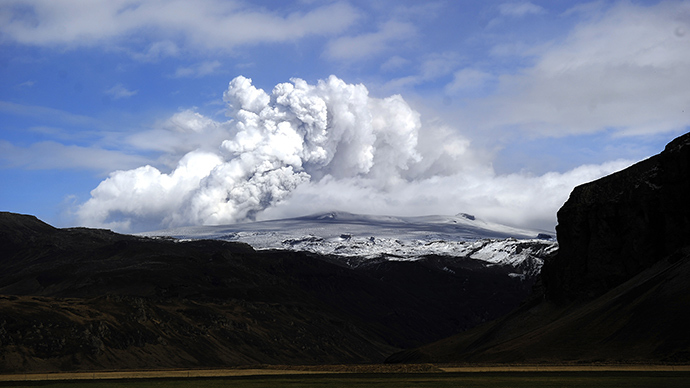
Iceland has issued aviation red alerts for Bardarbunga and authorities have evacuated the remote area 320 kilometers (200 miles) east of the capital of Reykjavik.
Following conflicting reports, the Icelandic Met Office confirmed the eruption under the Dyngjujökull glacier icecap in the northern part of Vatnajökull glacier.
The local authorities are keeping the country's airspace open, but have declared a no-fly zone of 100 nautical miles by 140 nautical miles around the eruption zone.
But, the no-fly zone could be expanded if the eruption melts the ice and spews volcanic ash.
Prior to the eruption, the island state's largest volcano was rocked by thousands of small earthquakes, deep beneath the Vatnajokull glacier, during the past week. On one of the days, authorities recorded up to 568 quakes.
The volcanic bursts are beginning to melt the ice within the glacier's icecap, according to Icelandic Meteorological Office volcanologist Melissa Pfeffer.
Pfeffer added that it remains to be seen whether the eruption is powerful enough to melt through the ice - 100 to 400 meters (330 to 1,300 feet) thick.
If this indeed does happen, then ash would burst through the ice and into the air.
'Catastrophic outburst'
The ice plays a big role in determining how much ash could be expected, Pfeffer said. "The thicker the ice, the more water there is, the more explosive it will be and the more ash-rich the eruption will be," she said.
The rising melted water beneath the icecap could be catastrophic, according to senior lecturer in earth sciences at Britain's Portsmouth University, Derek Rust.
"Only if the eruption melts its way through the ice cap will there be a wider threat to aviation," Rust told The Sunday Times. "The increasing volume of melted water trapped by unmelted ice may eventually be released in a catastrophic glacial outburst flood."
Avoiding action taking place #Icelandvolcano #Bardarbunga pic.twitter.com/0Zpgucv8YPBardarbunga has a dramatic history - about 8,000 years ago it was the source of the world's largest eruption in the past 10,000 years, spewing out lava that covered 950 square kilometers of land.
- Stuart W Hill (@Wadadli) August 23, 2014
Volcanic eruptions are common in Iceland, which is located in the hot seat of seismic activity - on top of the Atlantic's mid-oceanic ridge.
In 2010, Eyjafjallajokull volcano erupted in Iceland, producing a giant cloud of ash that severely disrupted air travel, costing airlines millions of dollars.
More than 100,000 flights were canceled due to the eruption and 10 million of people were left stranded after aviation officials were forced to close Europe's air space for five days due to fears the ash could harm jet engines.




Comment: This is the latest data point showing an intensification geological activity all over our Big Blue Marble:
- Underwater Antarctic Volcanoes Discovered in the Southern Ocean
You can also check out earthquakes and volcanic activity over the past year below: